Post by Laidback on Mar 21, 2008 12:35:47 GMT -5
After dining at Chez Michel or Terminus Nord the Canal St. Martin makes for a pleasant walk. It is less than a mile from Gare du Nord to the northern end at Place Stalingrad, but first I would suggest you visit the church of St. Vincent de Paul just in front of Chez Michel on the Pl. Franz Liszt because the 10th arrondissement appears rather grim and as of yet hasn’t offered me much of interest other than the canal and St. Vincent de Paul church.
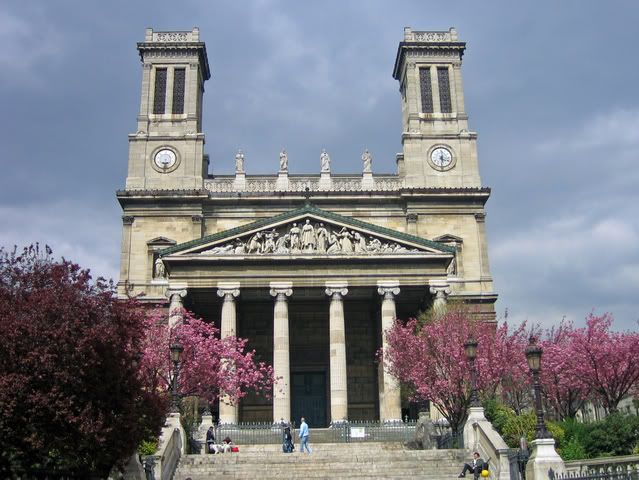
The exterior is more attractive, with its’ symmetrical towers and typanum, than the interior which has been allowed to run down, with the exception of the magnificent Cavaille Coll organ. Ms. L. lit a candle there for her Irish Catholic grandmother, but it appears that the locals tend to light cars instead.
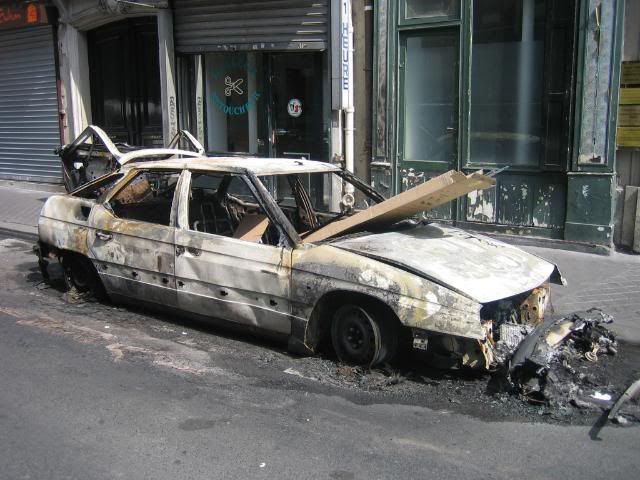
If you wish to save your walking for the quais of the canal then catch the #5 metro or the #26 bus at Gare du Nord to the Jaurès stop which puts you at the top end of the canal near the Bassin de la Villette. Look to the north and you will see the attractive Rotonde which was built for Louis XVI by the architect Ledoux.
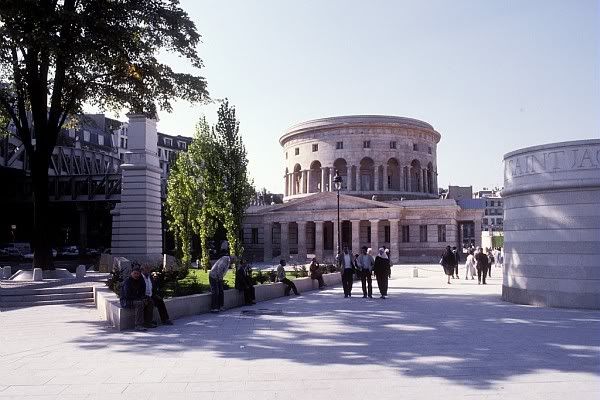
The walk along the quais is probably best on a fair weather Sunday when they become pedestrian only and lovers, families and tout Paris congregate in the cafés, parks and bridges. The charm of this northerly section was diluted on our last visit by the presence of a sort of homeless tent village between the 1st two bridges and their attendant litter of empty wine and beer bottles. Hopefully this problem will be addressed by the time you visit, as this area has become a Bobo retreat and is enjoying a fierce escalation in real estate prices. The locks are a treat to watch as they raise and lower the boats navigating from the Seine to the Bassin de la Villette
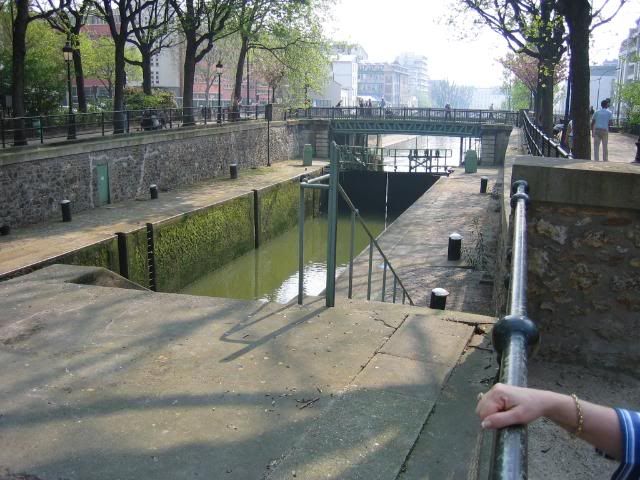
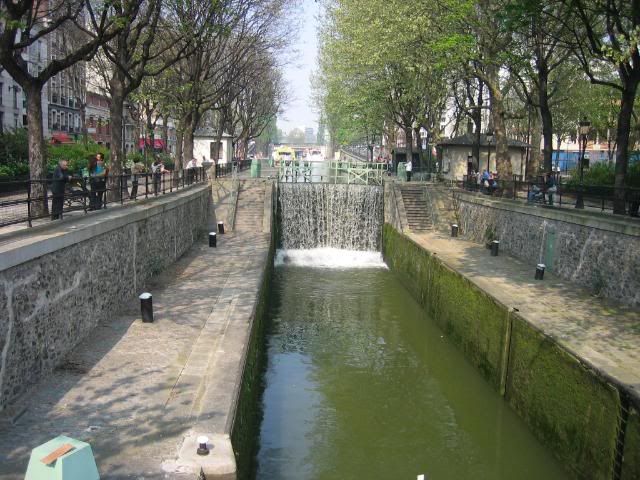
notice the change in water level of the boat in the next 2 photos.
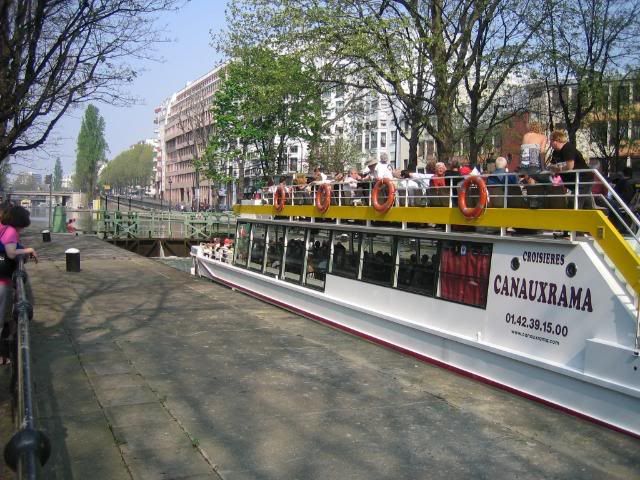
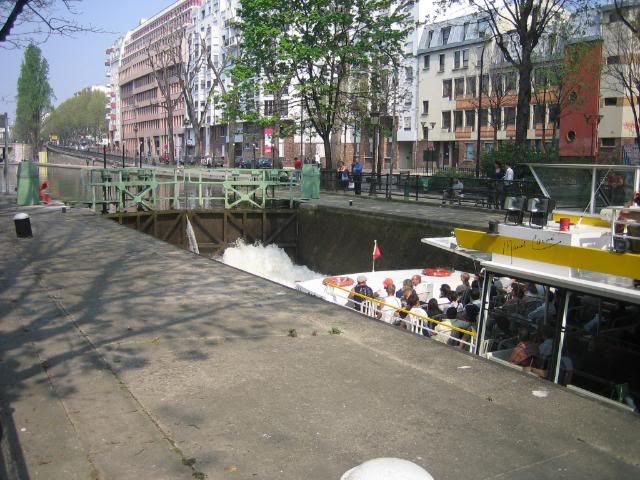
For you “Amelie” fans this is the area she came to skip the flat rocks that she pocketed from all over Paris.
There is a popular park, the Jardin de Villemin, on the Quai Valmy side just before the canal takes its’ left turn headed for the Bastille.
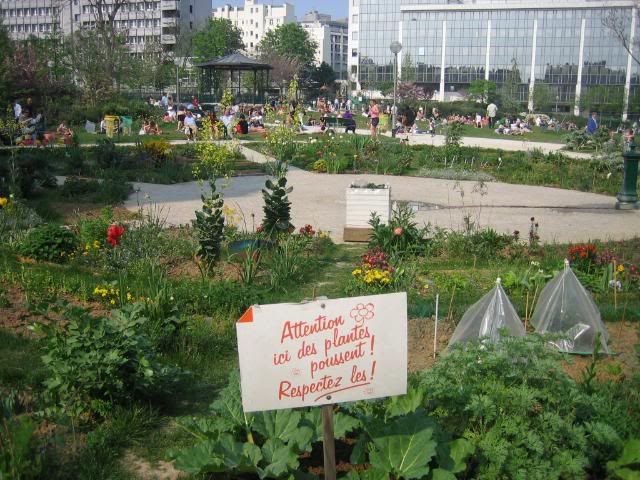
The cafés, wine bar/bistros and boutiques become numerous on both sides of the canal just after the park, and the junction of the canal and rue des Récollets is a popular place for street performers to entertain; notice the elevated foot bridge in the background.

The only café/bistro I have frequented is “Le Sporting” on rue des Récollets and the terrace fills up early, but there are many other spots well recommended such as the Verre Volé, Hotel du Nord (site made famous in the classic Marcel Carné film of the same name), and Chez Prune among others. Another place of interest is on the Quai de Jemmapes side, the Hospital St. Louis, which is supposedly the oldest continuously used hospital in Paris. I have only seen it from a previous canal cruise so there are no personal photos to show; hopefully our resident queen of web-sites will fill us in until my intended visit this Spring. It is said to have a courtyard reminiscent of Place des Vosges with its red brick, symmetrical façade; understandable since both places were projects of Henri IV, who probably used the same architect.
At this point we are only about a couple of blocks from Blvd. Jules Ferry where the canal ducks underground and passes beneath the Place de la Bastille before emerging as the Port de l’Arsenal just to the Seine side of the Opera Bastille. From the end of the walk at Jules Ferry it is only one block west to the bustling Place de la Republique.

If your mobility is challenged you can take a nice cruise of about 2 hrs. which will traverse 8 or 9 locks, some swing bridges and run underground for 2 km. This portion is eerily lit by skylights and is long and slow enough to engender an appreciation of daylight when you emerge from the netherworld beneath the Bastille. We smuggled on board some wine, cheese and bread which were the envy of several co-cruisers. Subsequently I have heard that some of the boats frown on this as they sell their own refreshments, so get better advice than found here.

The exterior is more attractive, with its’ symmetrical towers and typanum, than the interior which has been allowed to run down, with the exception of the magnificent Cavaille Coll organ. Ms. L. lit a candle there for her Irish Catholic grandmother, but it appears that the locals tend to light cars instead.

If you wish to save your walking for the quais of the canal then catch the #5 metro or the #26 bus at Gare du Nord to the Jaurès stop which puts you at the top end of the canal near the Bassin de la Villette. Look to the north and you will see the attractive Rotonde which was built for Louis XVI by the architect Ledoux.

The walk along the quais is probably best on a fair weather Sunday when they become pedestrian only and lovers, families and tout Paris congregate in the cafés, parks and bridges. The charm of this northerly section was diluted on our last visit by the presence of a sort of homeless tent village between the 1st two bridges and their attendant litter of empty wine and beer bottles. Hopefully this problem will be addressed by the time you visit, as this area has become a Bobo retreat and is enjoying a fierce escalation in real estate prices. The locks are a treat to watch as they raise and lower the boats navigating from the Seine to the Bassin de la Villette


notice the change in water level of the boat in the next 2 photos.


For you “Amelie” fans this is the area she came to skip the flat rocks that she pocketed from all over Paris.
There is a popular park, the Jardin de Villemin, on the Quai Valmy side just before the canal takes its’ left turn headed for the Bastille.

The cafés, wine bar/bistros and boutiques become numerous on both sides of the canal just after the park, and the junction of the canal and rue des Récollets is a popular place for street performers to entertain; notice the elevated foot bridge in the background.

The only café/bistro I have frequented is “Le Sporting” on rue des Récollets and the terrace fills up early, but there are many other spots well recommended such as the Verre Volé, Hotel du Nord (site made famous in the classic Marcel Carné film of the same name), and Chez Prune among others. Another place of interest is on the Quai de Jemmapes side, the Hospital St. Louis, which is supposedly the oldest continuously used hospital in Paris. I have only seen it from a previous canal cruise so there are no personal photos to show; hopefully our resident queen of web-sites will fill us in until my intended visit this Spring. It is said to have a courtyard reminiscent of Place des Vosges with its red brick, symmetrical façade; understandable since both places were projects of Henri IV, who probably used the same architect.
At this point we are only about a couple of blocks from Blvd. Jules Ferry where the canal ducks underground and passes beneath the Place de la Bastille before emerging as the Port de l’Arsenal just to the Seine side of the Opera Bastille. From the end of the walk at Jules Ferry it is only one block west to the bustling Place de la Republique.

If your mobility is challenged you can take a nice cruise of about 2 hrs. which will traverse 8 or 9 locks, some swing bridges and run underground for 2 km. This portion is eerily lit by skylights and is long and slow enough to engender an appreciation of daylight when you emerge from the netherworld beneath the Bastille. We smuggled on board some wine, cheese and bread which were the envy of several co-cruisers. Subsequently I have heard that some of the boats frown on this as they sell their own refreshments, so get better advice than found here.



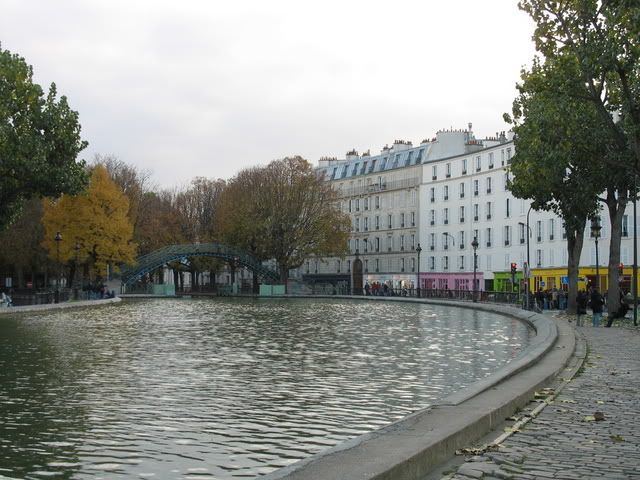

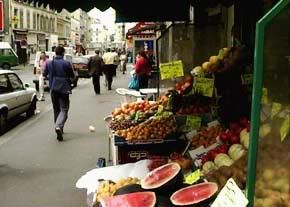


 hahahha
hahahha